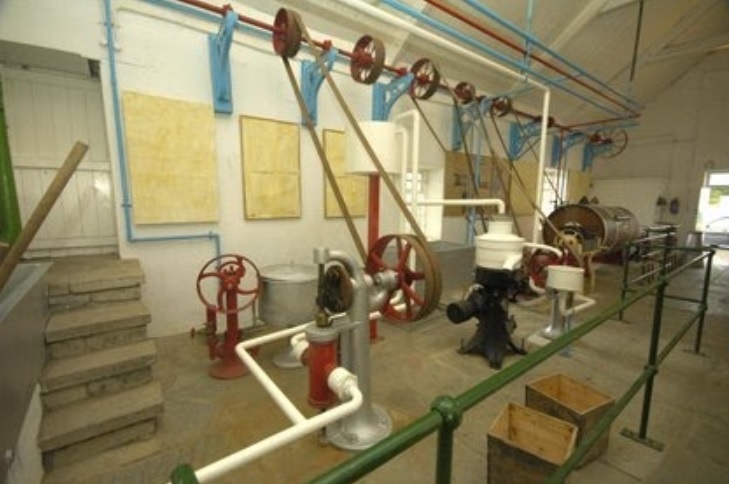
06 - The Cooperative Creamery
The creamery here in Dromcollogher was constructed in June 1889 and it is the location of the first Co-Operative Creamery in Ireland. Co-operative Creameries were promoted at that time by Sir Horace Plunkett and the Co-operative Movement.
This creamery was constructed in June 1889 and is the location of the first co-operative creamery in Ireland. It was developed by W.L. Stokes, the representative of the English Co-operative Wholesale Society in Limerick and Robert Gibson, a butter merchant. It followed from extensive campaigning to have a co-operative creameries established in Ireland by Horrace Plunkett and the pioneers of the co-operative movement.
This Creamery, and others, were developed in response to two late-nineteenth century innovations, one Technological and one Socio-Economic.

The interior of the Creamery was fitted out with dairy processing machinery and equipment from a bygone era and restored to working condition.
Technologically, the development of the Cream Separator radically changed Butter-production forever. Up to the second half of the nineteenth century, Irish Butter from this area was exported through the Cork Butter Exchange, which was the largest and most successful Butter Exchange in the world in 18th and 19th centuries. Irish bacon, eggs and butter had a ready market on the breakfast tables of London. However, the Cream Separator and its rapid adoption in Denmark, quickly had the effect of making Irish Butter unmarketable.

Demonstration of the restored machinery
The cream separator meant that a smoother butter of more consistent quality than butter churned on Irish Farms could be produced. It could also extract more cream from milk than churning and could do so more efficiently and hygienically. In order to compete with Europe, Ireland had to produce butter, uniform in package, colour and salt content and reaching the London market within twenty-four hours of manufacture. The factory system, utilising Cream Separator technology, was the only way forward.
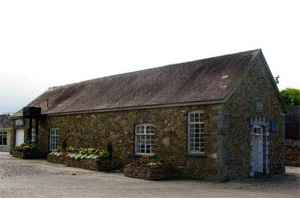
The creamery building as it looks today
The Socio-Economic innovation that sparked the development of this Creamery was the Co-operative Movement promoted by Sir Horace Curzon Plunkett, third son of Lord Dunsany, and his followers. Plunkett's earlier ventures involved setting up shops, banks, bakeries based on co-operative principles, but with little success. Existing shopkeepers and traders felt threatened by the notion and Irish farmers and labourers were initially indifferent to the co-operative ideas. Faced with active antipathy from commercial interests and apathy from the broad rural agricultural community, the Cooperative Movement was not going anywhere fast – until the threat to the Dairy industry, particularly in Munster proved a catalyst for adoption. Seeing their livelihoods disappearing in the late eighteenth century, farmers were now amenable to considering alternative methods of production and Plunkett shifted his focus to the establishment of Co-operative Creameries.
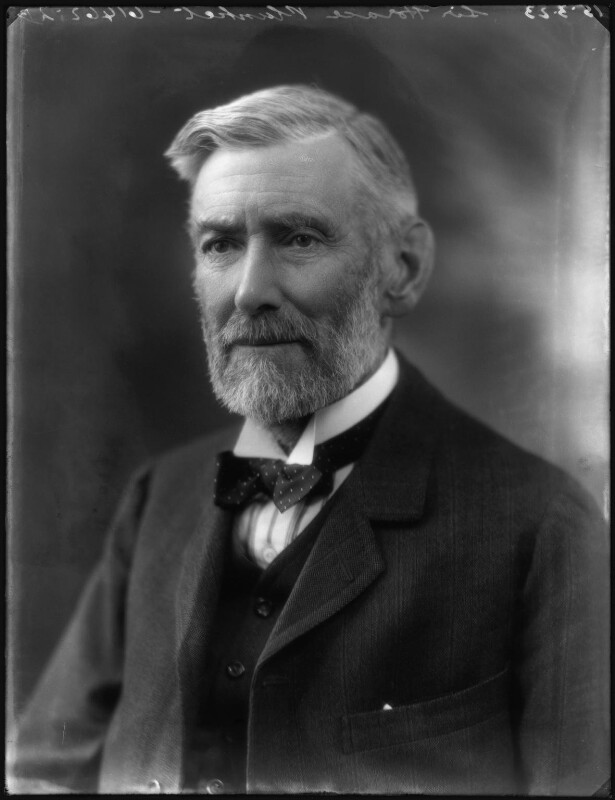
Sir Horace Plunkett, whose vision for the Co-operative Dairy Movement led to the opening of this, the first Co-operative Creamery, here in Dromcollogher in 1889.
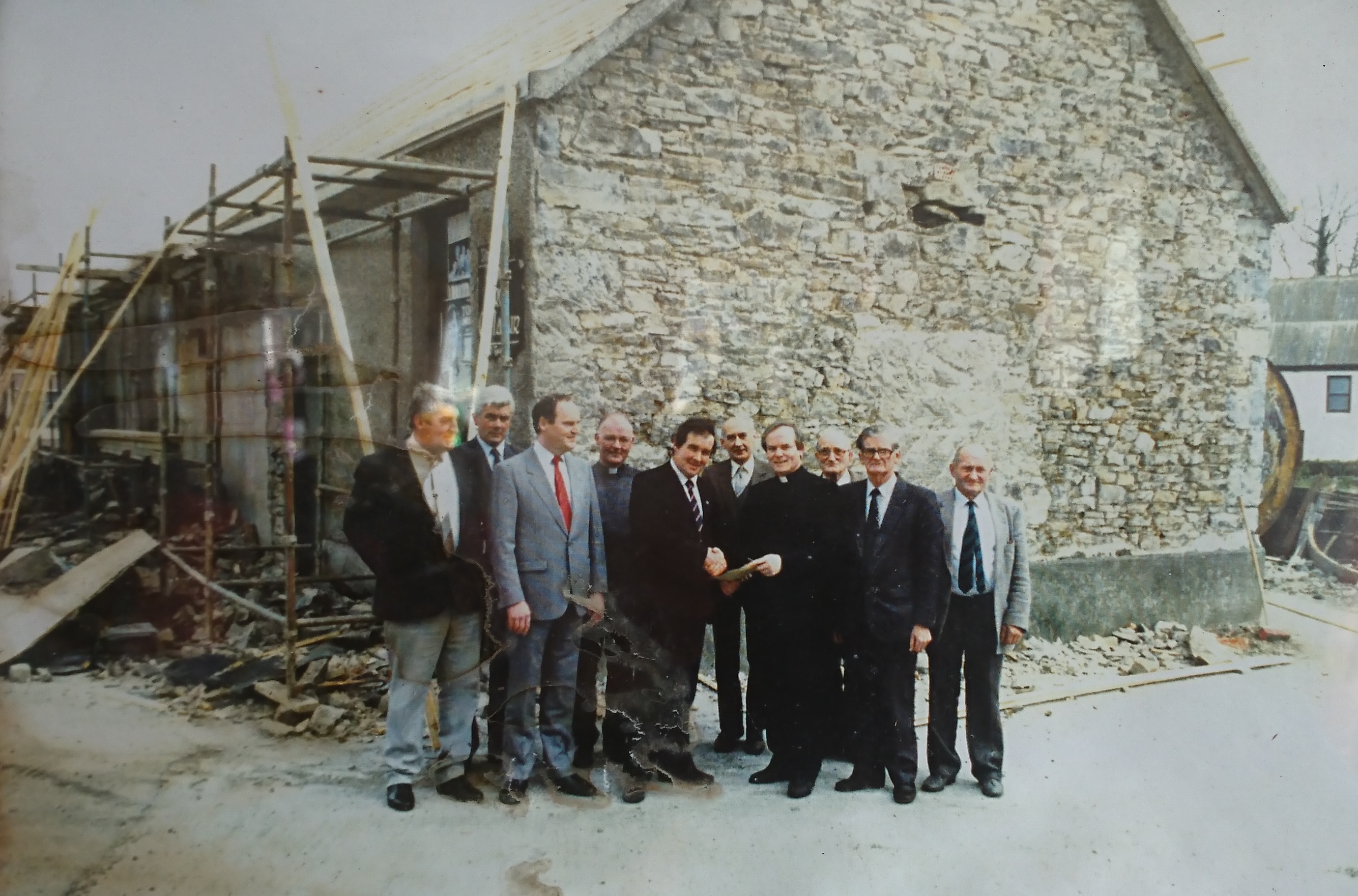
The beginning of the restoration works
As it happened, this, the very first Co-operative Creamery in Ireland was set up here by W.L. Stokes, the representative of the English Co-operative Wholesale Society in Limerick and Robert Gibson, a butter merchant. It was quickly followed by many more, as Plunkett and his followers became more successful. This creamery passed into private hands after about three years as a co-op when a local man, a Mr O’Brien ran it privately for nineteen years. Subsequently it operated as a Branch Creamery to the Central Creamery in Milford. Ultimately it became part of the Charleville-based Golden Vale federation of creameries, before closure.
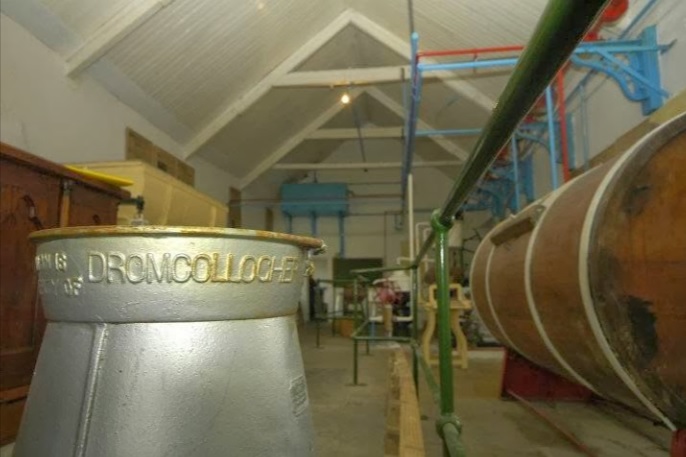
The Creamery interior with a 'Dromcollogher' churn or tankard from the early days of operation here.

The crest that was commissioned and placed over the door of the restored Creamery for its centenary. It features Hazel twigs, symbolising the Coll Coille (Hazel Wood) from the town's name in Irish. The clasped hands are an obvious representation of co-operation. The motto reads 'ní neart go cur le chéile' - there is no strength without unity.
The building was acquired from Golden Vale in time for the 1994 centenary of ICOS, the Irish Co-operative Organisation Society. ICOS was originally the Irish Agricultural Organisation Society as founded by Horace Plunkett in 1894 as an adoption of the Danish co-operative model. The building was preserved externally and restored internally as a fully equipped creamery from the earliest days of co-operative creameries in Ireland.
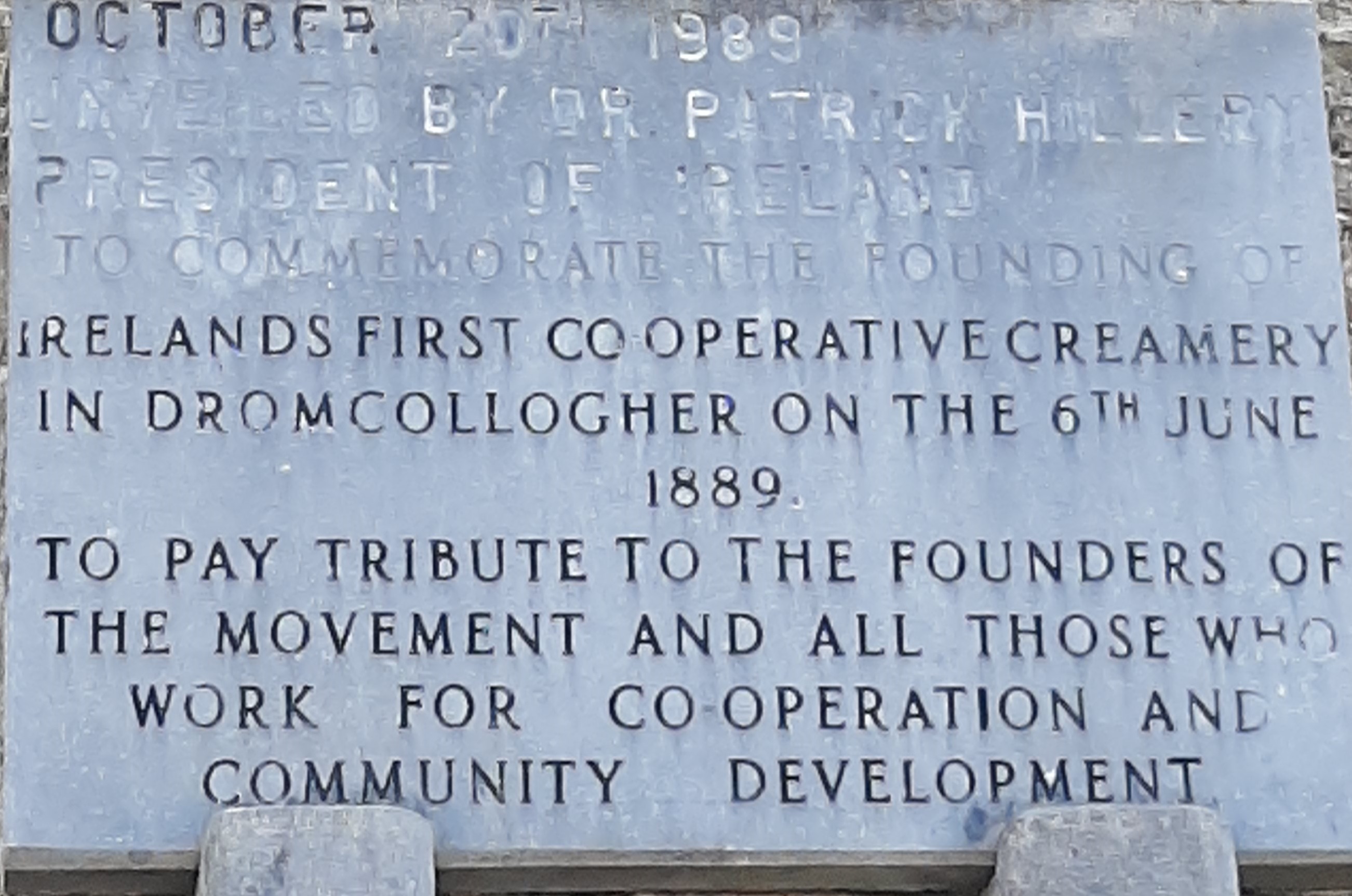
The plaque that was unveiled by President Patrick Hillary on October 20th, 1989.
To commemorate the centenary of the founding of Ireland's first co-operative creamery, the National Co-Operative Dairy Centre and Museum was located here in Dromcollogher. The building was faithfully restored to preserve the atmosphere and character of a co-operative dairy, containing a working steam engine, boiler and milk vats and it was dedicated to the founder of the co-operative movement in Ireland, Horace Plunkett.
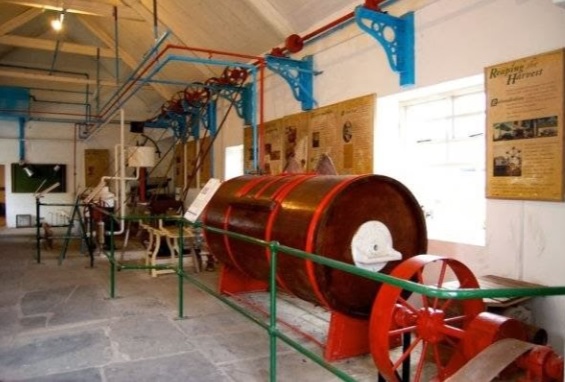
A view of the interior of the Creamery as it was restored to commemorate the centenary of its founding.
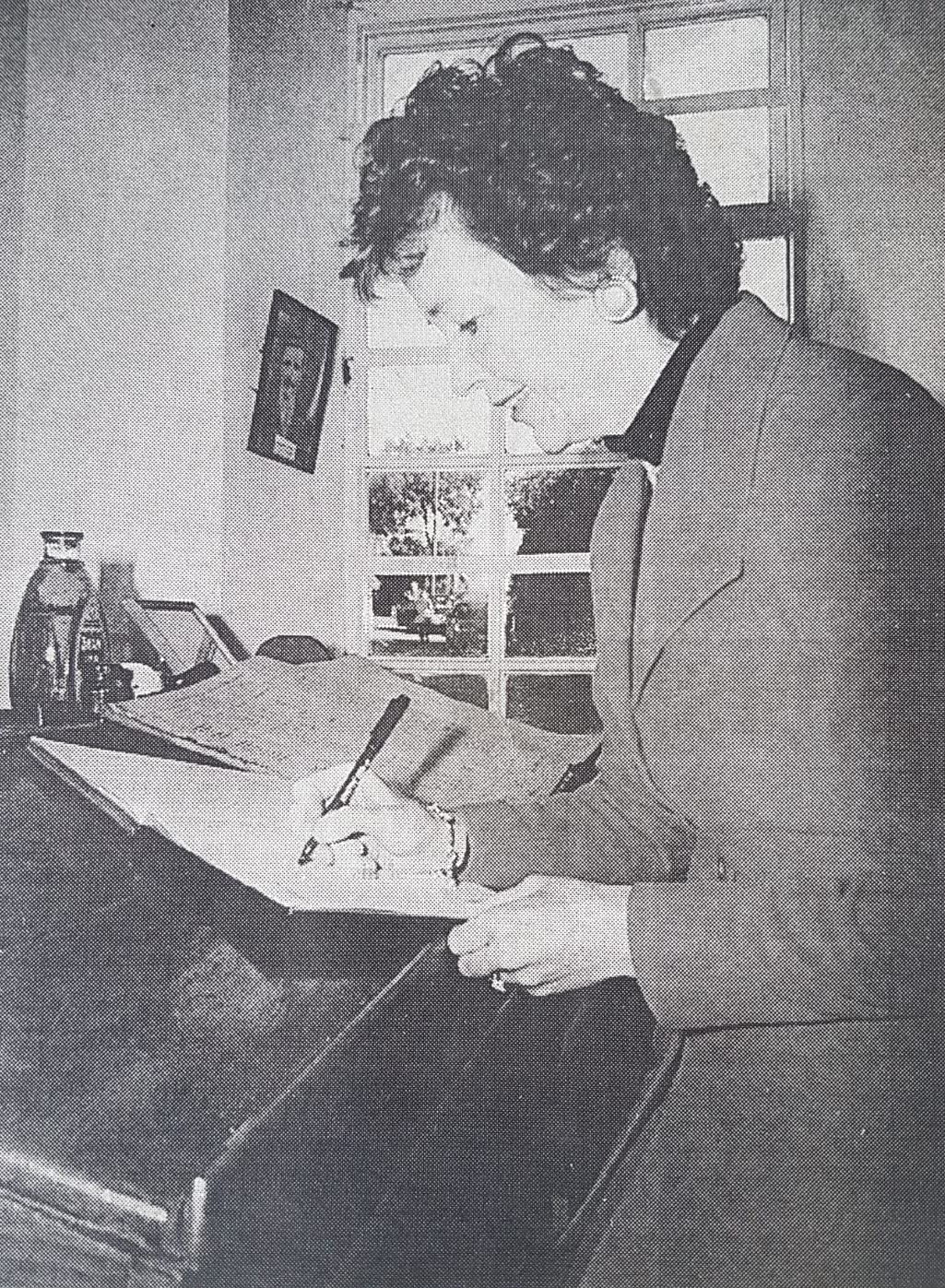
President Mary Robinson signing the visitors book on the occasion of her visit to the Creamery Museum in Dromcollogher.
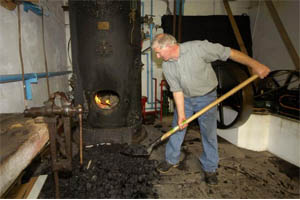
Stoking the Boiler which was the source of Steam Power for all the machinery and equipment in the Creamery.

Some suppliers pass the time as they queue for the Creamery outside the nearby Old School in Dromcollogher.